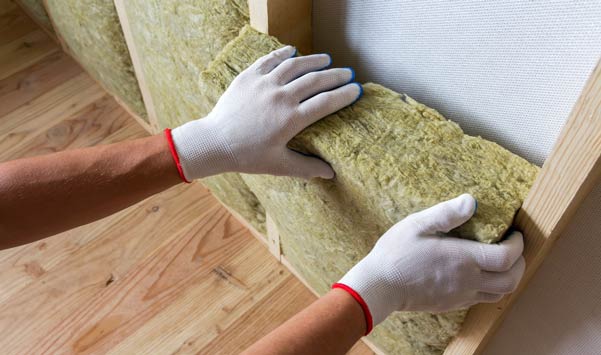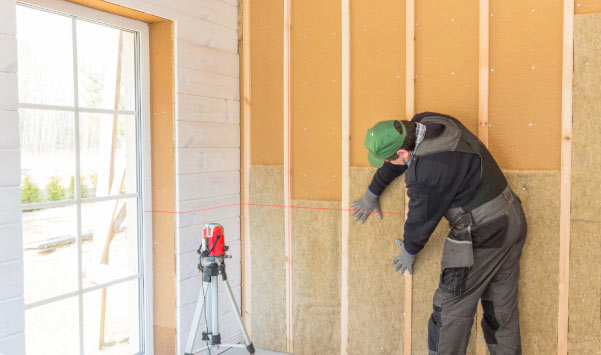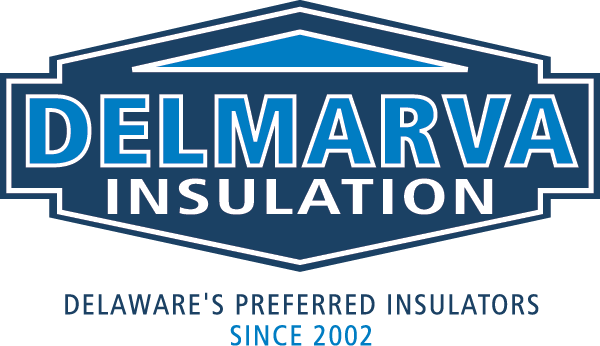What is Mineral Wool?
If you’re researching insulation options for your home, you’ve likely come across fiberglass, spray foam, and cellulose. But what about mineral wool? Also known as rock wool or slag wool, mineral wool insulation is a durable, versatile option used in residential, commercial, and industrial buildings. Its unique properties—fire resistance, water repellency, and excellent thermal performance—make it an especially strong choice for homes in Delaware’s humid climate.
In this guide, we’ll explain what mineral wool is, how it works, and why it performs so well in Delaware homes. We’ll also compare it to other insulation materials and highlight the areas of your home where it can provide the most value.
Understanding Mineral Wool Insulation
Mineral wool is a type of fibrous insulation material made from either:
- Rock wool – produced by melting volcanic rock (like basalt) and spinning it into fibers.
- Slag wool – created by recycling blast furnace slag (a byproduct of steel production).
It typically comes in two forms:
- Mineral wool batts – semi-rigid panels designed to fit snugly between wall studs or floor joists.
- Loose-fill insulation – blown into attics, walls, or other cavities.
While it looks similar to fiberglass, mineral wool offers a unique set of benefits that make it stand out among common insulation materials.

Key Benefits of Mineral Wool Insulation
1. Excellent Thermal Performance
Mineral wool has a high insulating value, with a standard 2×4 wall cavity achieving about R-15, compared to R-13 for typical fiberglass batts. That means your home stays more comfortable with less material. It also performs consistently in both hot summers and freezing winters—something Delaware homeowners need year-round.
2. Fire Resistance
Because it’s made from stone and slag, mineral wool is naturally non-combustible. It can withstand extremely high temperatures without melting or releasing toxic smoke, unlike many foam-based insulation products. Some building codes even allow it to be used as fireblocking material, providing an extra layer of safety for your home.
3. Moisture and Mold Resistance
Delaware’s humid summers and frequent storms make moisture a constant concern. Mineral wool is hydrophobic, meaning it repels water instead of absorbing it. Even if exposed to leaks or high humidity, it retains its insulating power and doesn’t foster mold growth.
4. Superior Soundproofing
The dense fiber structure of mineral wool makes it one of the best acoustic insulation materials available. It absorbs sound waves and reduces noise transmission between rooms and floors—ideal for home offices, media rooms, or homes near busy roads.
5. Durability and Eco-Friendliness
Unlike some insulation that can settle or compress over time, mineral wool is dimensionally stable and maintains its R-value for decades. It’s also pest-resistant and made with up to 75% recycled content, making it a greener choice for environmentally conscious homeowners.
Delaware’s Climate and Insulation Needs
Delaware’s humid, temperate climate combines the hot, muggy summers of the South with the cold winters of the Mid-Atlantic. In July, average highs reach the mid-80s °F with heavy humidity and frequent thunderstorms, while January lows dip into the 20s °F with occasional snow and strong coastal winds. On top of that, the state receives about 45 inches of rain annually, spread throughout the year. These conditions mean homes must be insulated against heat, cold, and moisture at the same time. Unlike fiberglass or cellulose, which can absorb water and lose effectiveness, mineral wool insulation is water-repellent, mold-resistant, and maintains its R-value even when damp.

It also provides reliable thermal performance in both hot and cold seasons, reducing strain on HVAC systems and keeping homes comfortable year-round. For Delaware homeowners, this makes mineral wool a smart, durable choice that stands up to the state’s challenging climate.
Mineral Wool vs. Other Types of Insulation
When deciding on the best insulation materials for your home, it helps to compare mineral wool with other common options.
- Mineral Wool vs. Fiberglass – Both are non-combustible and affordable, but mineral wool offers a slightly higher R-value per inch and a denser structure that fits snugly between studs without sagging. This reduces gaps and improves long-term performance compared to fiberglass batts.
- Mineral Wool vs. Cellulose – Cellulose is eco-friendly and often used as loose-fill insulation, but because it’s made from paper fibers, it can absorb water and support mold growth if it gets damp. Mineral wool is inorganic, naturally water-resistant, and fireproof without added chemicals, making it more durable in humid or wet conditions.
- Mineral Wool vs. Spray Foam – Spray foam provides a very high R-value per inch and doubles as an air sealant, but it is petroleum-based, combustible, and more expensive. Mineral wool may not seal air leaks on its own, but it adds fire safety, resists moisture, and allows walls to dry out, which are important advantages in Delaware’s humid climate.
Overall, mineral wool stands out as a balanced option. It combines the thermal performance of fiberglass, the eco-friendly appeal of cellulose, and some of the durability benefits of spray foam without many of their drawbacks.
Where to Use Mineral Wool in Your Home
- Exterior Walls: Mineral wool batts fit snugly between studs, eliminating gaps and creating a continuous thermal barrier.
- Attics: Both batts and loose-fill mineral wool provide high R-values while resisting roof leaks and humidity.
- Basements & Crawl Spaces: Mineral wool is ideal for damp environments where other insulation may fail.
- Interior Walls: Its soundproofing qualities make it perfect for bedrooms, offices, and media rooms.
- Fire-Rated Areas: Around garages, fireplaces, or chimneys, mineral wool adds critical fire resistance.
Final Thoughts
Mineral wool insulation is a durable, safe, and high-performance option for Delaware homeowners. Its combination of fire resistance, moisture control, soundproofing, and thermal efficiency makes it an excellent fit for the state’s demanding climate.
If you’re planning a new construction project or an insulation upgrade for your existing home, mineral wool is worth serious consideration.
Contact Delmarva Insulation today for a free insulation estimate and learn how mineral wool can improve your home’s comfort, efficiency, and safety.
References
“Can Mineral Wool Insulation Double as a Soundproofing Solution?” ArchitectureCourses.org, 2024, www.architecturecourses.org/sustainability/can-mineral-wool-insulation-double-soundproofing-solution. Accessed 24 Sept. 2025.
“Climate of Delaware.” Delaware Climate Office, University of Delaware, 4 July 2024, climate.udel.edu/delawares-climate/.
“Delaware Energy Code Building Energy Code Top Topics Q and A.” Delaware Department of Natural Resources and Environmental Control, documents.dnrec.delaware.gov/energy/buildings/Building-Energy-Code-Top-Topics-Q-and-A.pdf.
“Fiberglass and Mineral Wool Insulation: Which Is Better?” House Energy, www.house-energy.com/Insulation/Fiberglass-Mineral-Wool.htm.
“Insulation Materials.” U.S. Department of Energy, Office of Energy Efficiency and Renewable Energy, www.energy.gov/energysaver/insulation-materials.
“N068 – Engineered to Outperform: Fiberglass and Mineral Wool Insulation.” Insulation Institute, insulationinstitute.org/wp-content/uploads/2016/01/N068-Engineered-to-Outperform.pdf.
“Water-Resistant Insulation.” Delaware Department of Natural Resources and Environmental Control, I-ADAPT Adaptation Strategies, documents.dnrec.delaware.gov/I-ADAPT/AdaptationStrategies/Water-Resistant%20Insulation.pdf.


